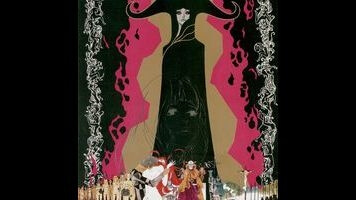The animated psychosexual freak-out Belladonna Of Sadness is a major re-discovery

In the psychosexual fever dream of Belladonna Of Sadness, flowers bloom into tunnels of layered labia minora, and moth-winged penises swarm a woman choked by a long phallic ribbon that thickens into a slimy eel. Bodies entwine in sex and struggle to the sound of jazzy psychedelic rock, suspended in an astral plane of watercolor blotches. Later, drink and dance explode into an orgy of crudely drawn figures with giraffe’s necks and lion’s maws between their legs; they squeeze rabbits out of their anuses and rip themselves open to spill out masses of roe. A peasant woman is raped by the king under the rule of jus primae noctis, the moment represented as a pulsating tear up the middle of her body, blood gushing out as a mass of vampire bats. The Devil comes to her as a slippery phallus, part abuser, part teacher—all part of a cycle of violence and pleasure, repression and resistance, witch trials and witchcraft that can only be ended by liberation and revolution.
A commercial failure in 1973, Belladonna Of Sadness bankrupted Mushi, the pioneering Japanese animation studio founded by the great Osamu Tezuka. Now touring in an uncut restoration, this freak-out of subtexts and limited animation techniques by Tezuka’s close collaborator, Eiichi Yamamoto, stands as one of the most unusual and challenging animated features of its time—no small feat, given that its contemporaries include not only René Laloux’s Fantastic Planet and the early features of Ralph Bakshi, but also Tezuka and Yamamoto’s A Thousand And One Nights and Cleopatra. Belladonna Of Sadness was intended as a follow-up to those two earlier features—in their own way as strange and experimental as this movie—but was only begun after Tezuka had left Mushi to start a new company. In lieu of his rounded figures and lines, it looks to art nouveau, expressionist figure drawing, and the fashions of the time for influence, slipping through a dazzling array of styles.
Inspired by the work of Jules Michelet—the 19th century French historian who, among other things, named the Renaissance—Belladonna Of Sadness straddles the line between academia and obscenity. Yamamoto and his team transform Michelet’s theory of witchcraft as a form of rebellion against political and religious oppression into an anti-authoritarian parable that combines feminist agitprop, erotic art, and the rape-revenge plotting of the era’s sexploitation films. In feudal France, a young woman named Jeanne (Aiko Nagayama) defies the powers that be—explicitly connected with sexual violence and repressed desire—through sexual pleasure and its mythological analogue, magic. Perhaps too ambitious for its own good (or at least its budget), the film is impossible to dismiss, even if it exhausts its reserve of ideas.